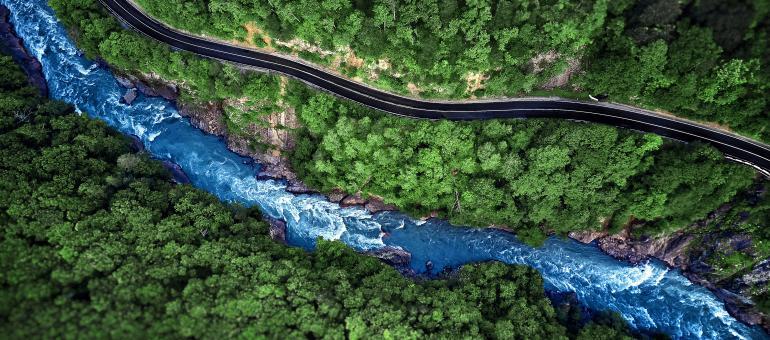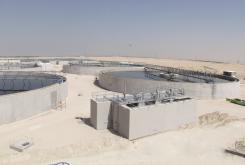What Coming Water Reuse Regulations Will Mean for Facilities

A new year brings new regulations, and in most industries, that means a deadline whereby compliance must be demonstrated. Typically, regulations act as a hammer. Once it hits, organizations may need to adjust business priorities to meet specific timelines .
The emerging potable reuse sector of the water industry, where utilities are taking wastewater and recycling that to augment freshwater and drinking water supplies, is the exact opposite.
Instead, the water reuse regulations we expect to see in 2023 will act as an enabler, opening up new opportunities. For example, Arizona has created a Technical Advisory Group that will continue work in 2023 to create regulations for direct potable reuse, while California and Colorado also have plans to implement rules this year. Florida is in the rulemaking process of the same initiative, and Texas recently published a guidance document on their regulatory process.
These regulations serve not as a mandate for action but as a helpful planning tool for sustainability in the various communities within these states so they can augment freshwater supply. Regulators are implementing a framework because the state of water supplies has evolved into an emergency in many communities. The deadline, in this case, isn't about government action. It's more severe: Freshwater supply is running out.
According to WWF, two-thirds of the world population could face water shortages as soon as 2025. Communities want to invest to avoid that kind of disaster, and regulations serve as an enabler of recycling methods. Processes like direct potable reuse (DPR) — using treated wastewater for drinking — can help curb water scarcity. Regulation supports public perception and acceptance of those initiatives because it justifies what the community has chosen to do, backed by science-backed oversight.
Recycling projects begin with utility providers, requiring strong leadership, thoughtful planning and multi-year commitments. Regulations offer certainty for those efforts through a framework that lays out what's allowed as utilities spend on planning, development, and setup.
Let's take a closer look at how water reuse regulations have helped communities achieve goals, what utilities should be doing to plan for 2023 regulations, and the role technology plays in that process.
Where regulations have spurred success
DPR efforts are already underway for the Colorado River and South Jordan, Utah, among other locations. For example, the Colorado River Municipal Water District in Texas began its operation in 2013, and its plant produces roughly 1.5 million gallons of reclaimed water per day. Nearly ten years after operations began, it's clear how vital these efforts are. With the river drying up so rapidly that the federal government warned it might impose supply cuts, reusing treated water can help meet the area's water needs.
California leads the way in DPR regulation development, which has been several years in the making. In 2017, the California State Water Board's Division of Drinking Water developed the criteria to define its DPR efforts and protect public health. Its forthcoming regulation will be mandated by the end of 2023. This massive effort continues to be on track as the State Water Resources Control Board is finalizing language through engagement with its Expert Panel and all of the key stakeholders.
What utilities should plan for
The deterioration and disappearance of the freshwater supply should be enough to initiate the necessary action from any utility. The regulation sets the framework for how it can future-proof its water supply.
With regulations, utilities can better understand where the goalposts stand and help reduce uncertainty around what they need to do. Regulations also help inform the costs of reuse programs and what available technologies are part of the equation.
Utilities should first consider their existing infrastructure and what local challenges exist to begin designing what a water recycling program would look like.
Is a program demonstration necessary as a public tool to prove the importance of the project? As a regulatory tool? As an operator training tool? As a tool to prove out different technologies? The power of a demonstration is significant and the role of demonstrations is growing, as evidenced by projects in San Diego, El Paso, Virginia Beach, Los Angeles, and South Jordan, to name a few.
Once a project has a structure in place, utilities can see the benefit of picking a path forward that they can build upon as they transition to new freshwater supplies.
How to identify the right technology
A regulatory structure or even a regulatory path can enable technologies that support treatment objectives. In reuse, there are many unit operations and certain technologies that provide value for many types of reuse outcomes. Since all water is recycled, no matter if you’re treating water today for pollution abatement or doing advanced recycling to augment freshwater supplies you’re somewhere on a continuum or spectrum of recycling. Understanding the recycling continuum can inform a technology roadmap and enable smart decisions today that put you in the right place to achieve future goals as there is movement along the continuum.
Once you know what the regulations enable or forbid and consider local challenges, you can evaluate different technologies like membrane bioreactors, ultrafiltration, reverse osmosis, ozonation, and UV disinfection as part of the solution that redirects discharge to a sustainable mean of augmenting your freshwater supply. Finding a partner that can help determine which technologies best suit your needs is key to a successful reuse program.
Learn more about Veolia Water Technologies & Solutions reuse and reclamation expertise, how we’ve helped communities achieve their goals, and what solution is right for you.







